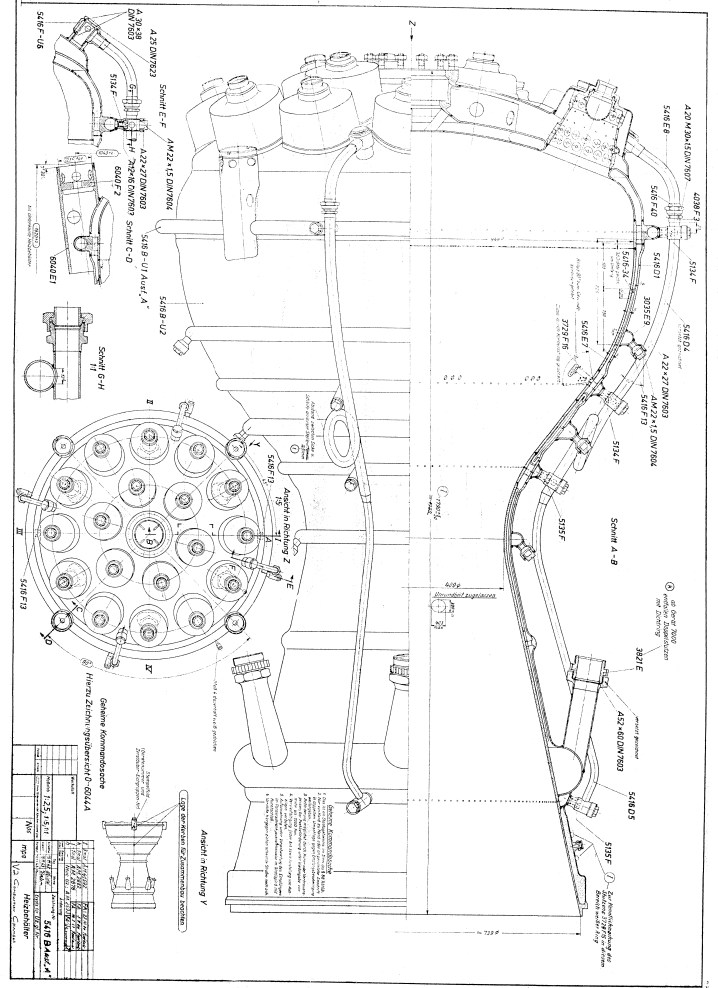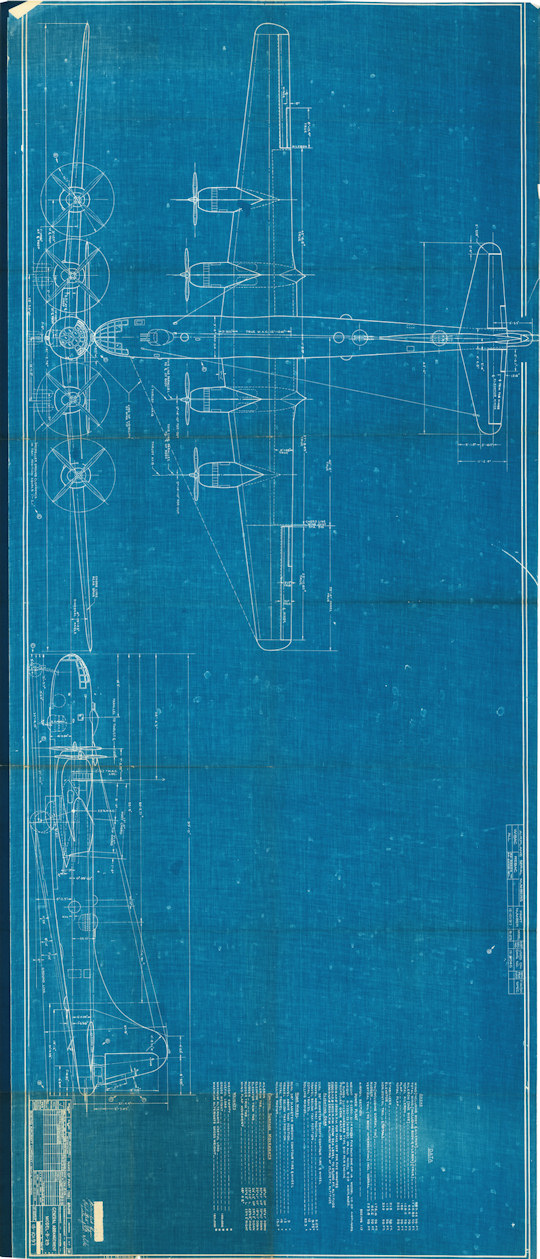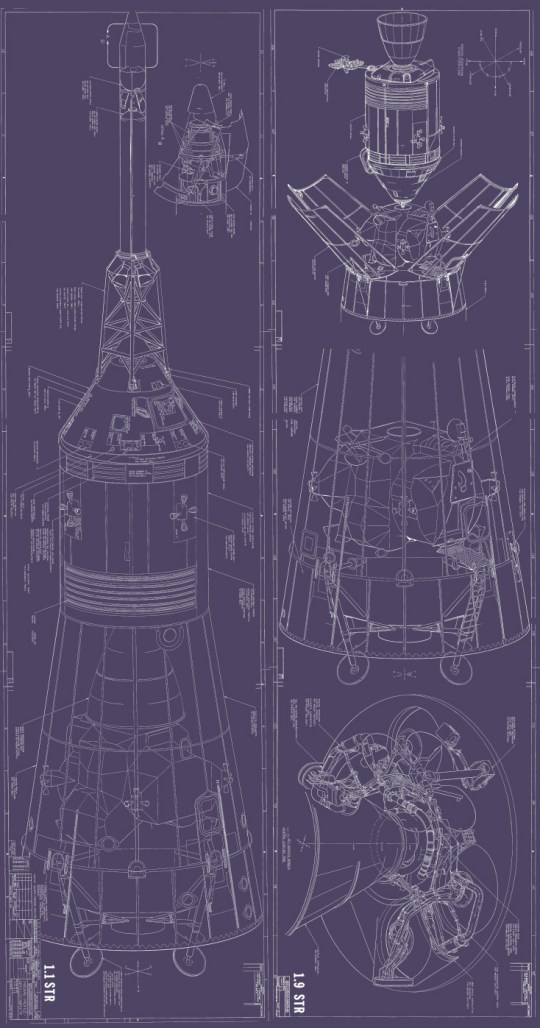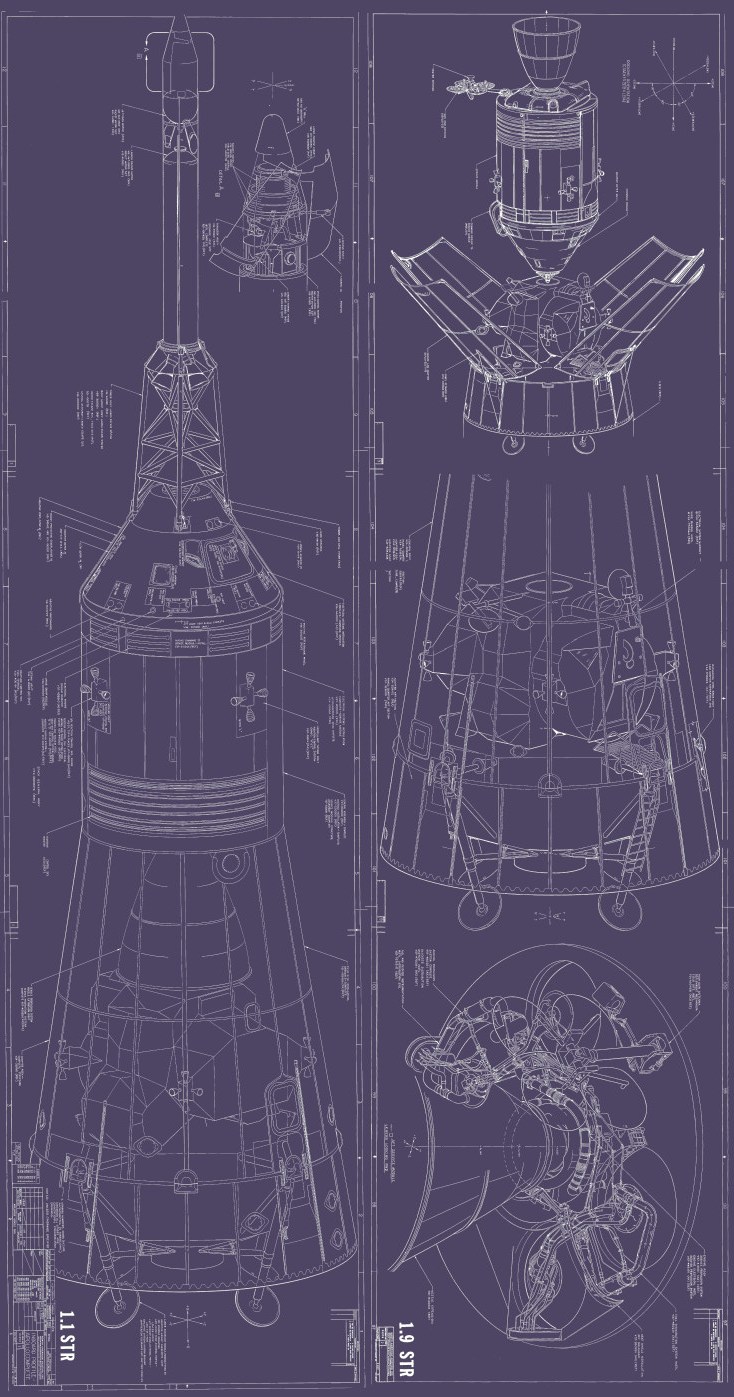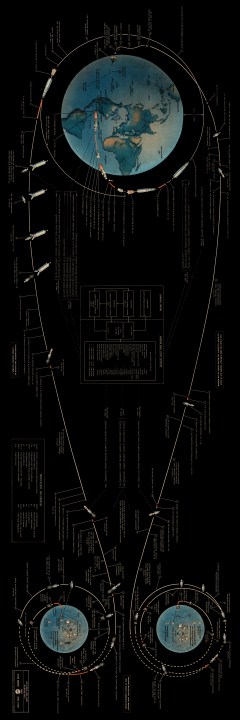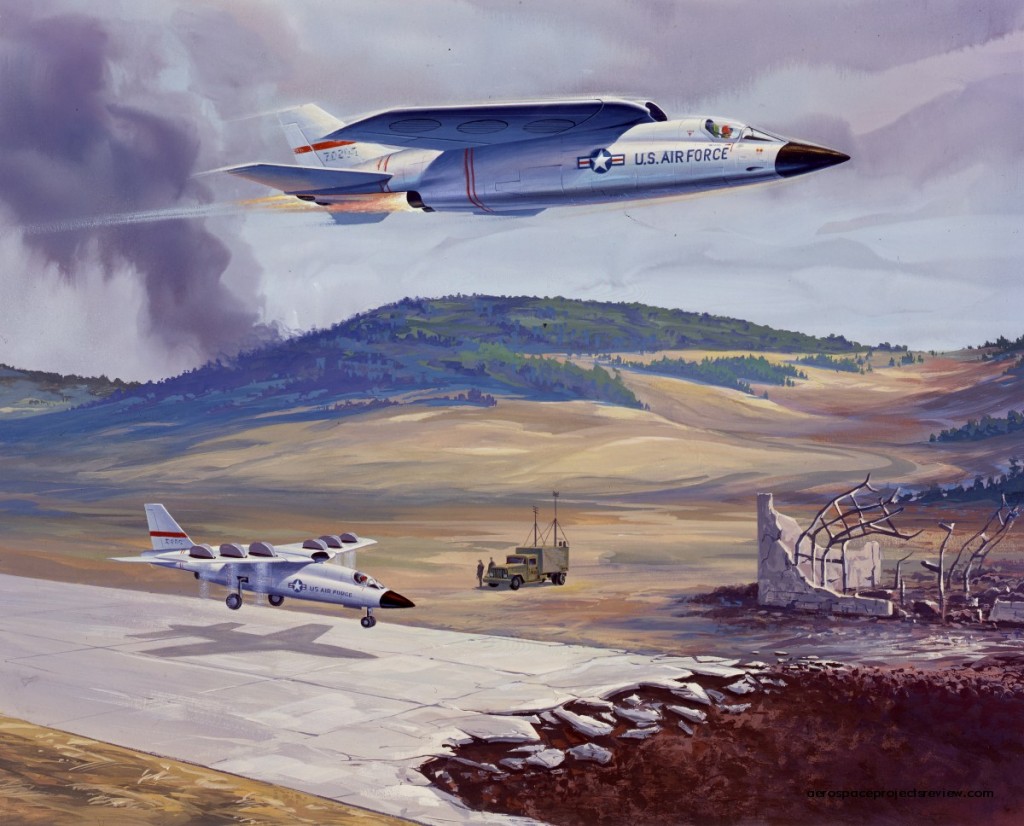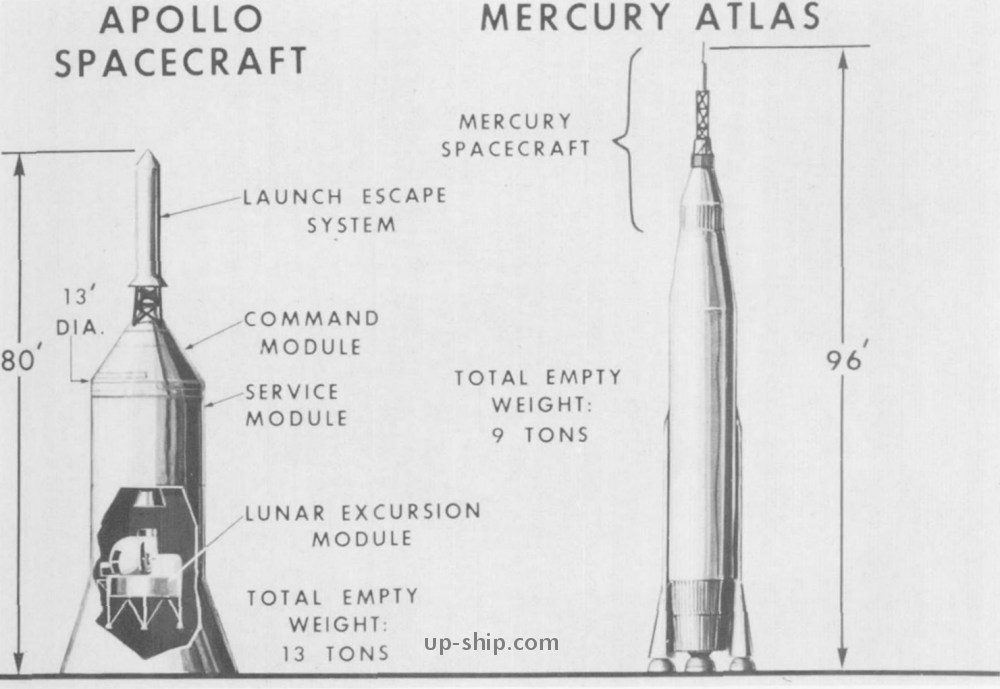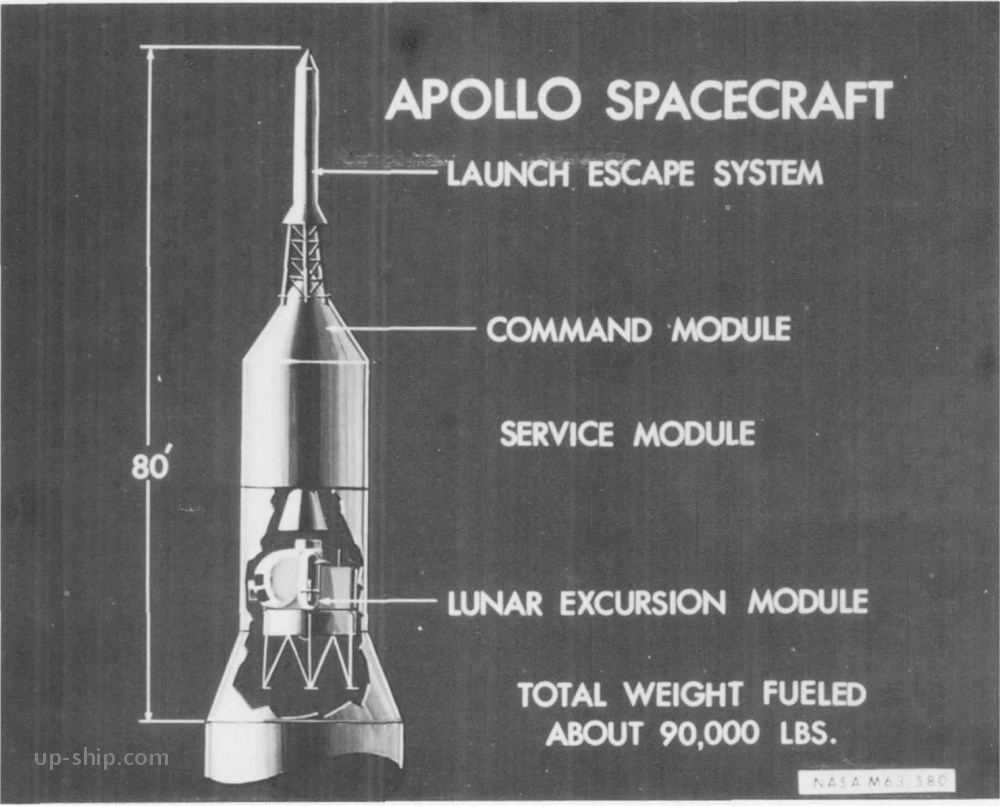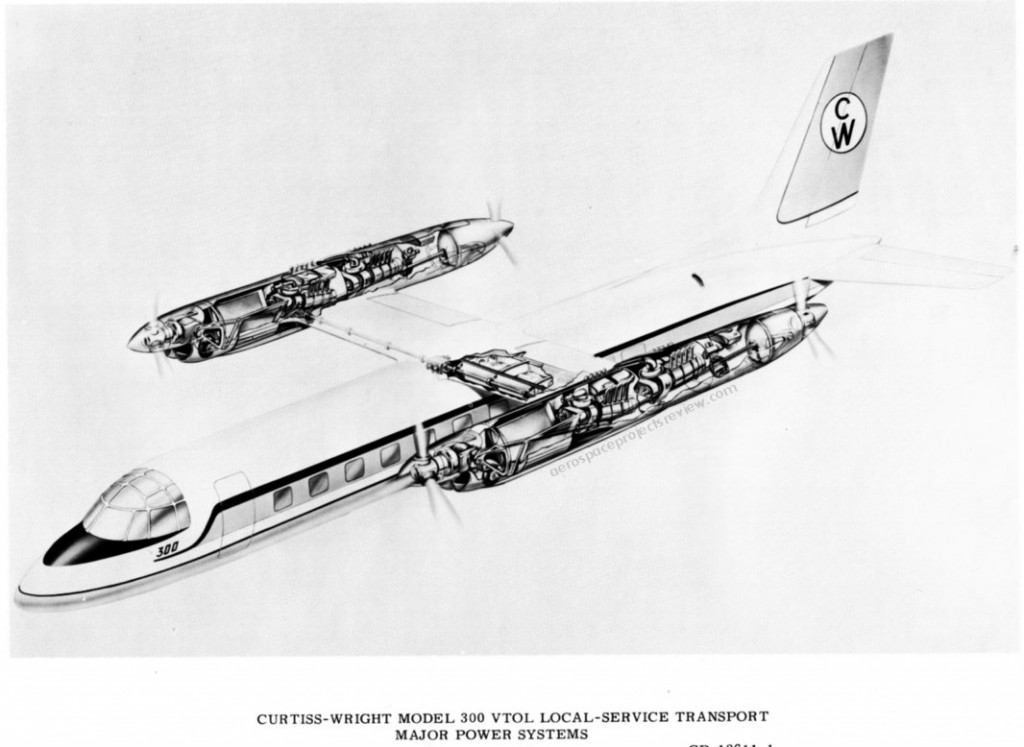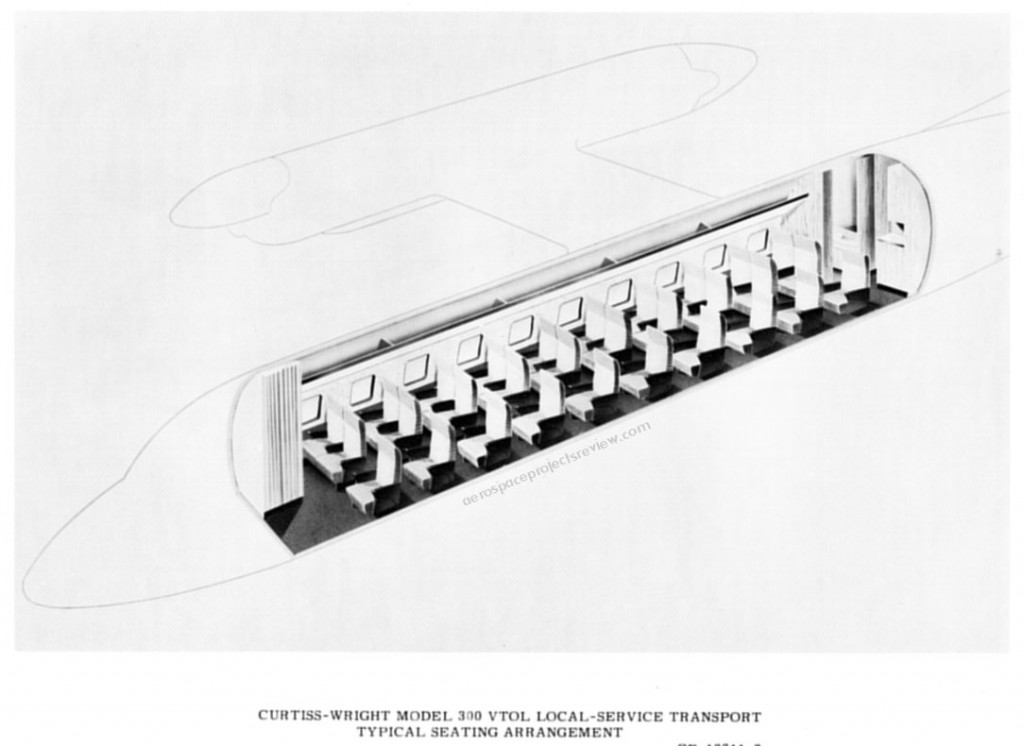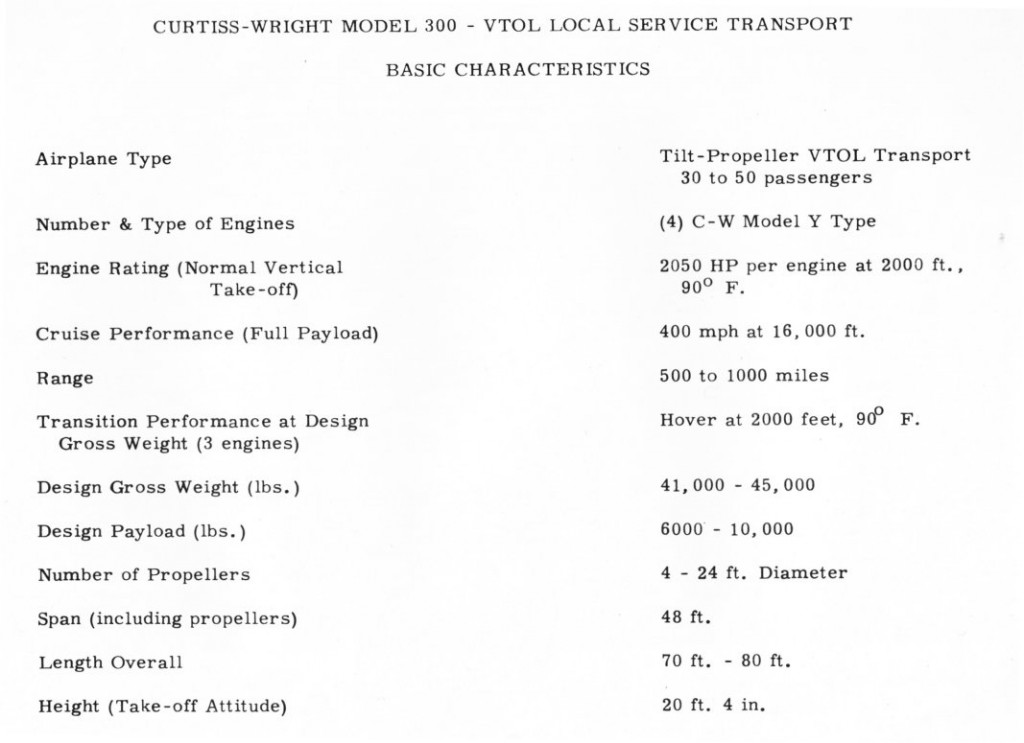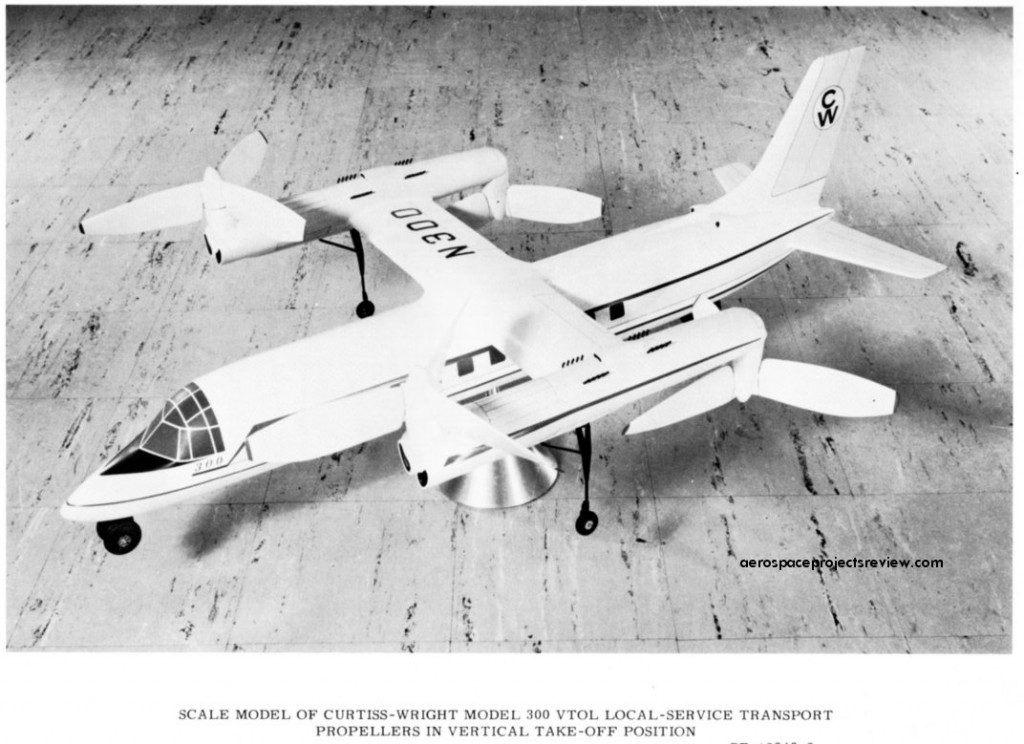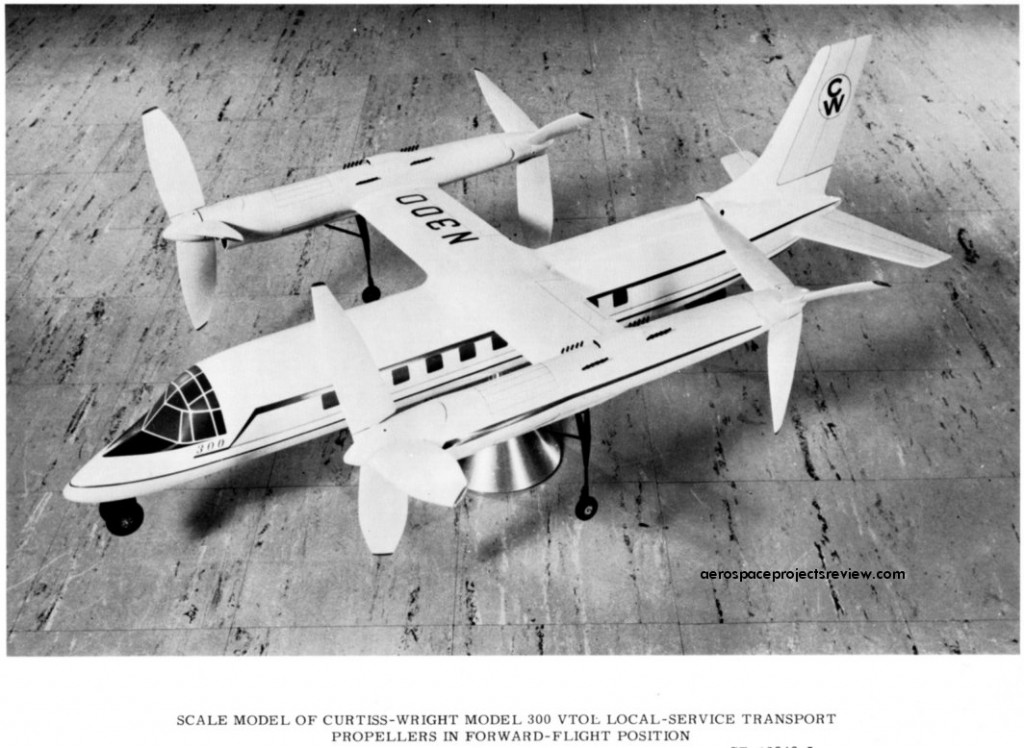OK, now that the first set of prints is out and available for purchase, I’m looking down the road to the next. A couple of the ones I’m looking at are pretty bignormous, and thus expensive, so I’m considering the possibility of smaller versions of a few. However, I’ll probably only do one size, rather than both. Shown below are the next set of candidates; some are prepared, or nearly so; some have a lot of work to do. All are shown at 10% the full-size original image, so you can put ’em side by side if you want to see how they’d compare.
If you see something you like, speak up! Either in the comments or via email. Only the ones that reach a certain number of up-votes will be produced, so if you want one, ya gotta say so. Additionally, this next go-around, those who vote early will be given the chance to buy the first print run of these at some savings compared to the public release. 
First: V-2 (A-4) Rocket brownline, full size. 16.5X56 inches, $45
Second:V-2 (A-4) Rocket brownline, reduced size size. 12X41 inches, $24
Third: V-2 (A-4) Rocket Engine brownline, 24X33 inches, $40
Fourth: X-15A-3 (Delta Wing) Blueprint, 10X40 inches, $20
Fifth: B-29 Blueprint (full scale), 36X84 inches, $150 (BIG!)
Sixth: B-29 Blueprint (half size), 18X42 inches, $37
Seventh: Apollo Blueprints (full size), 24.5X47 inches, $55
Eighth: Apollo Blueprints (smaller size), 18X34 inches, $30
Ninth: Apollo trajectory plot, 8X24 inches, $10


